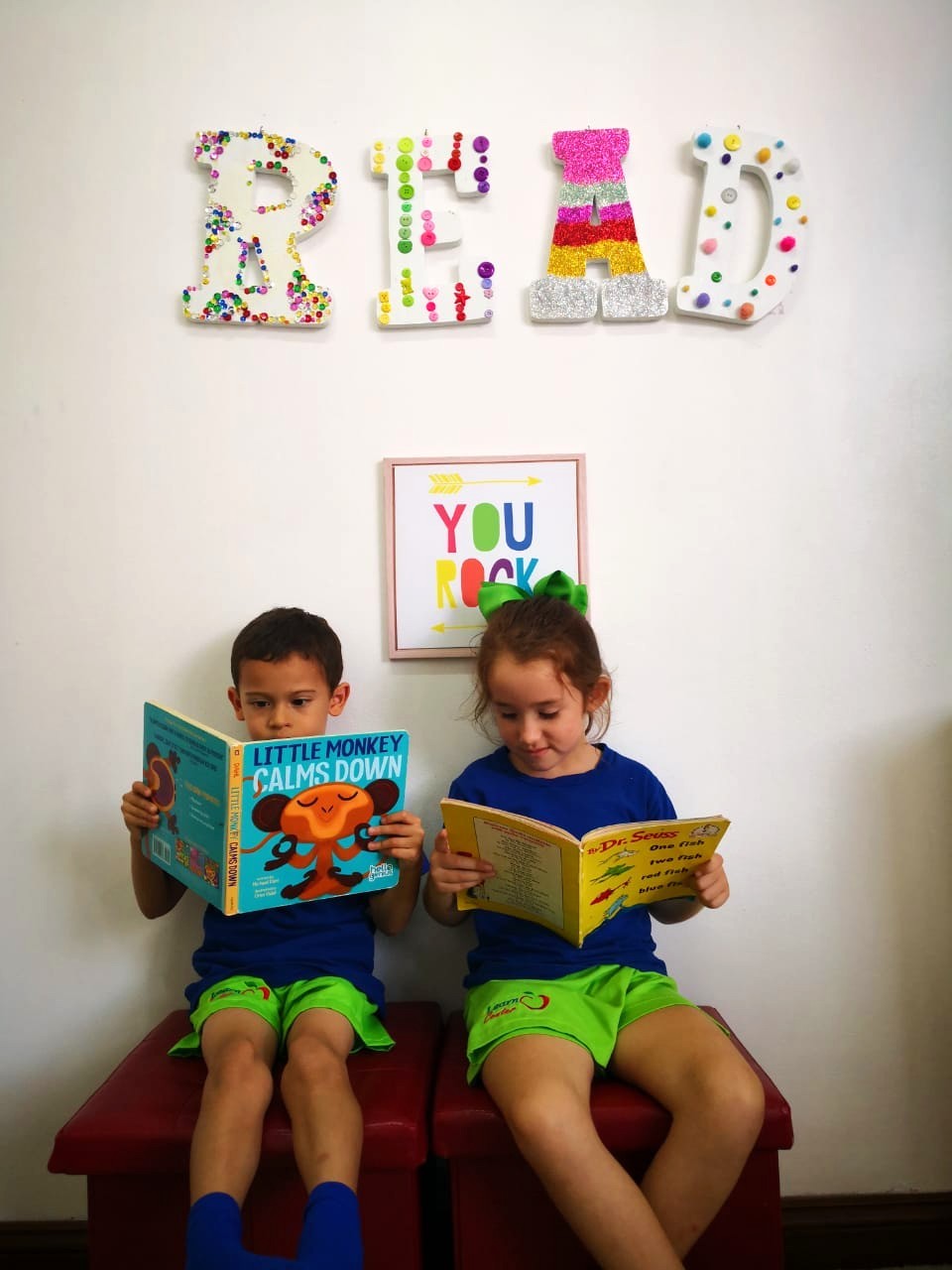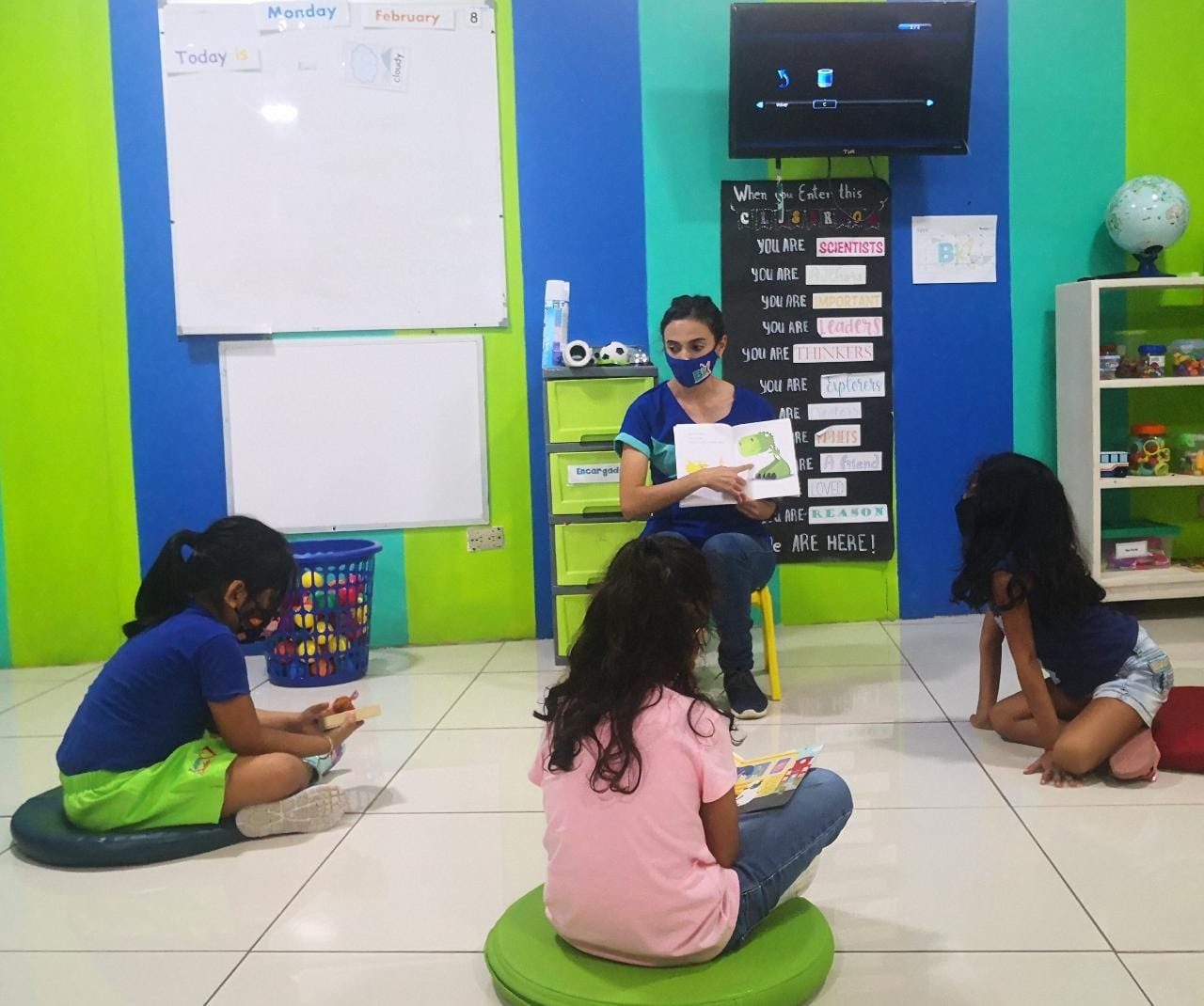Raquel, from Costa Rica, has been teaching kids English for over a decade and is the founder of ILearn Center, which offers holistic English classes for young learners and teenagers.
How often do you tell a story? Not only in class as a teacher, perhaps, but to your family, coworkers, or siblings? We certainly do it more often than we think. Telling stories is not only a great means of communication but plays a crucial role in the lives of children. And young learners love it!
By telling stories in the ESL classroom, we’re not only working on language skills — like vocabulary, grammar, and pronunciation — we’re developing imagination, creativity, and socioemotional and cognitive skills as well. We can also positively affect students’ behavior and manners using this powerful tool.
Here are six classroom benefits of this amazing practice that will encourage you to use storytelling more often in your ESL classroom.
1. Stories enhance listening skills.
Every time we tell a story, kids are listening carefully and internalizing both the new and familiar words they hear. They must pay attention to the words (as well as your supporting gestures and any accompanying learning materials) to gain a deeper understanding. As all ESL teachers know, developing these listening skills is crucial for language learning.
2. They kindle creativity and imagination.
Stories help children to consider new ideas, imagine unknown worlds, and create memorable moments in their minds. During storytime, everything ever wanted is possible. Even if a student is having a tough time, they can turn their day around through storytelling. They can visit the mountains, beach, or another calming space through a story. And, kids will have countless stories of their own to invent and share.
Teaching in the virtual classroom? Check out these classroom management strategies for teaching online.
3. Stories boost student interest in reading.
Reading is powerful. Being a reader gives you knowledge that can open up worlds! Sadly, nowadays, with so much information just a click away, people often lack good reading habits. Developing this habit in childhood encourages kids to learn about and pursue topics of interest throughout their lives and to become more aware of other cultures and beliefs. People with cultural knowledge tend to be more empathic as well. As teachers, we are helping to raise the future generation, and empathy and compassion are an important part of this.
Learn more about how to teach kids English.
4. They increase focus and concentration.
Setting up a regular time for storytelling will calm a classroom of energetic students, and kids will be ready to listen, their attention spans will improve, and their ability to focus and concentrate will advance as well. The first time you tell stories might be challenging, but after getting used to it as a routine, kids will love it and will be more focused on the activity.
5. Storytelling teaches new vocabulary.
Storytime is a great practice that increases English vocabulary in young learners. Repetitive stories can create confidence, and you will often hear students telling the same stories to others. Students are working on vocabulary, tenses, and pronunciation all while enjoying the story itself.
Find out more about how to teach ESL vocabulary.
6. Stories promote empathy.
Moral stories advocate for good manners and empathy. They introduce topics that are important for social development in the classroom environment, as well as good lifelong behaviors. Teaching life lessons through storytelling introduces topics in a fun way while delivering them in an indirect and non-threatening manner.
Evidently, storytime is a great addition to the English language teaching classroom. Stories are not always introduced through books — there are many ways to tell interactive stories to kids! Whether it’s through props, flashcards, rhymes, realia, puppets, pictures, toys, or gestures, as facilitators, we have the opportunity to help young learners develop strong language and personal skills that will last them a lifetime.








